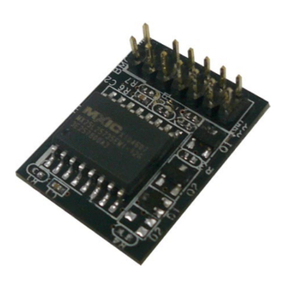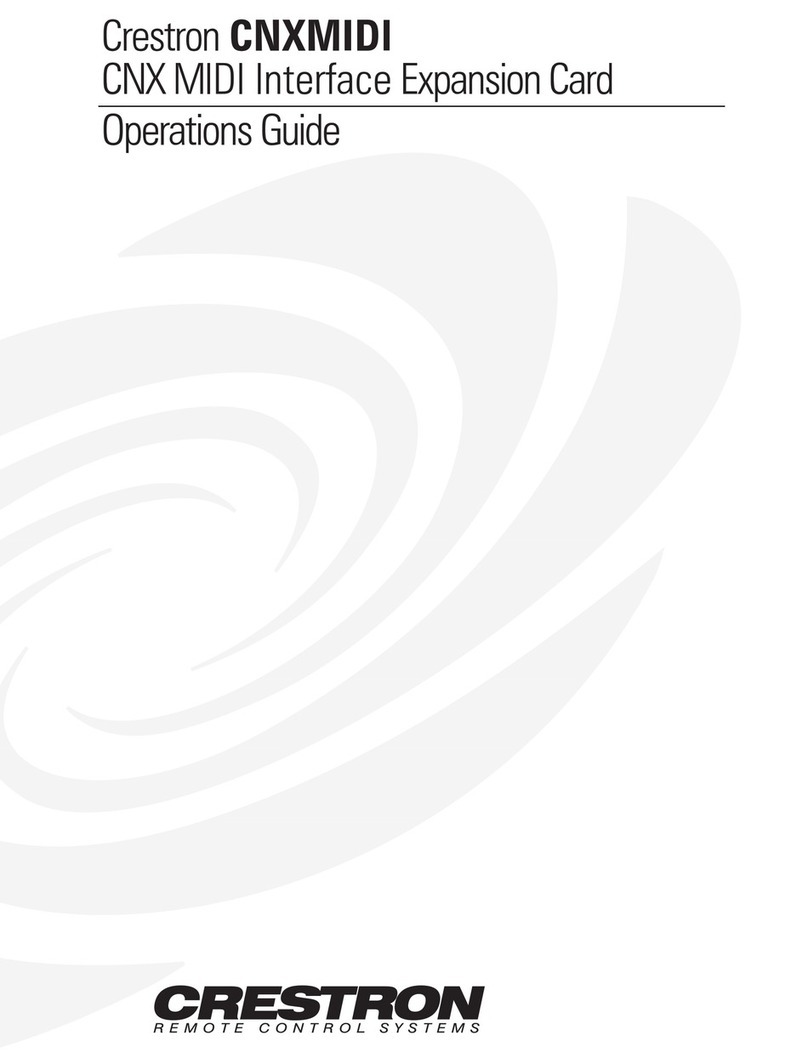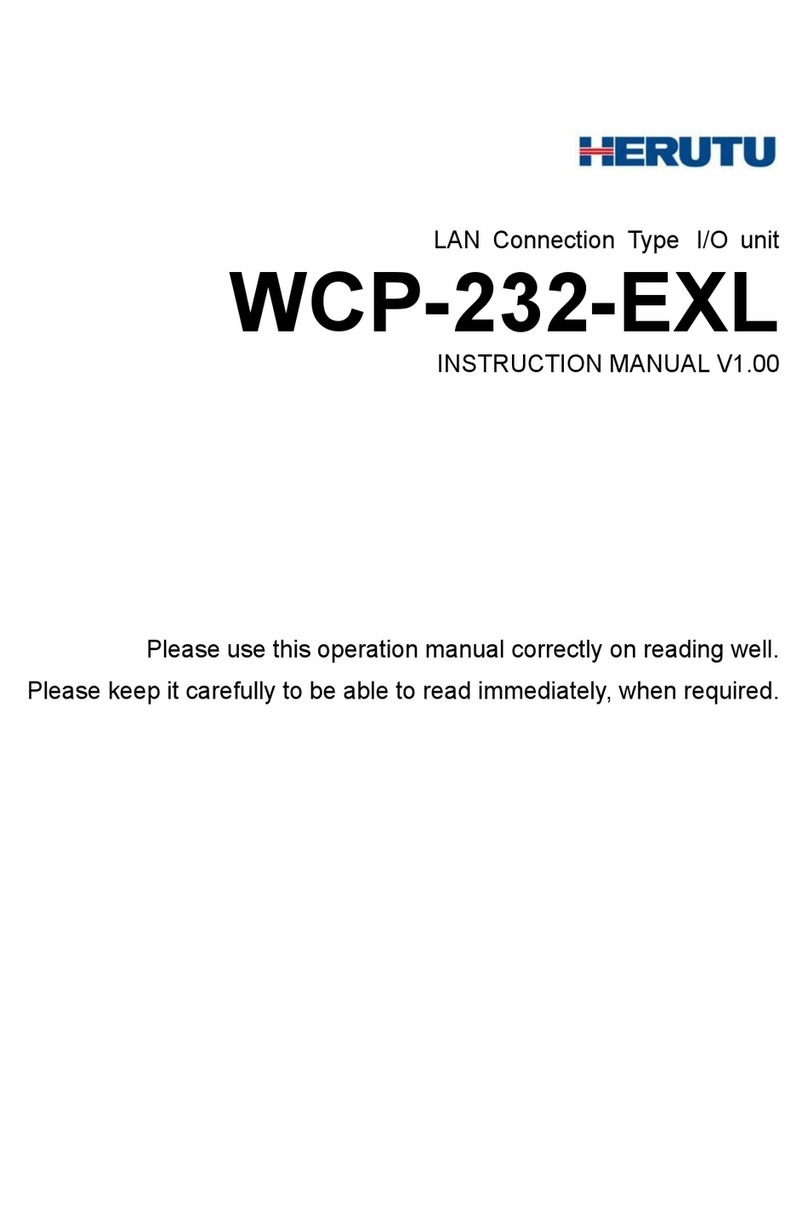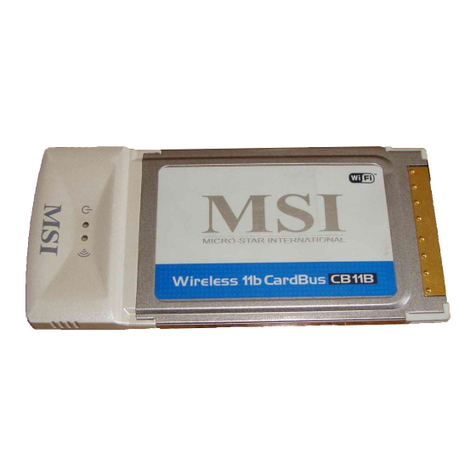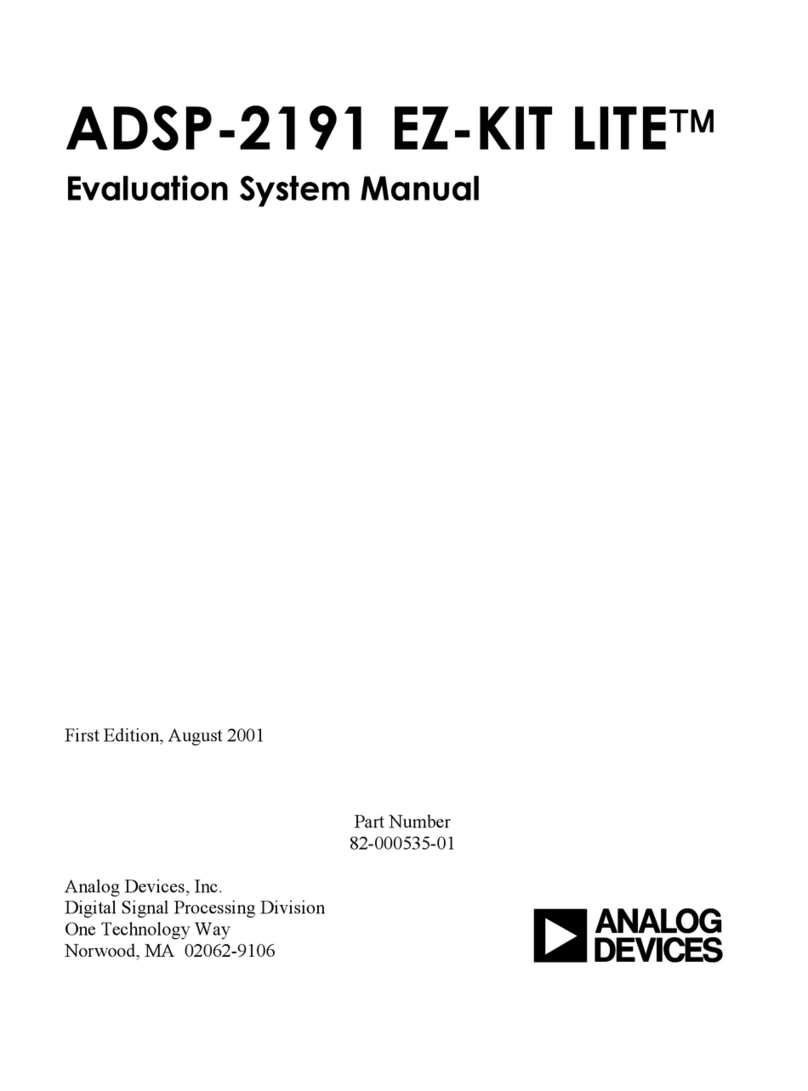Everex EV-159 User manual

~~I
VERE
RAM
3000
Deluxe™
(AT
Memory
Expansion
Board)
OWNER'S
MANUAL
AND
REFERENCE
GUIDE
EV-159
(VERSION
2.1)
EVER
for
EXcellence
MAN-OOI09-21

RAM
3000
Deluxe™
(AT
Memory
Expansion
Board)
OWNER'S
MANUAL
AND
REFERENCE
GUIDE
EV-159
(VERSION
2.1)
EVEREX
SYSTEMS,
"INC.
48431
MILMONT
DRIVE
FREMONT,
CA
94538

Notice
Everex
Systems, Inc. reserves
the
right
to
make
improve-
ments
in
the
product
described
in
this
manual
at
any
time
and
without
notice.
DISCLAIMER: While
we
do
our
best to avoid such a situation,
Everex Systems
will
not be responsible
for
any loss
of
infor-
mation resulting from the use of this product.
This
manual
is copyrighted.
All
rights
are
reserved.
No
portion
of
this
manual
may
be copied, photocopied, repro-
duced, translated,
or
reduced
to
any
electronic
medium
or
machine-readable
form
without
prior
consent
in
writing
from
Everex
Systems, Inc.
(c)
Copyright
November,
1987
Everex
Systems, Inc.
ii

Everex,
EVER
for
EXcellence,
RAM
3000 Deluxe
and
EDISK
are
trademarks
of
Everex
Systems, Inc.
IBM
PC, AT, PC-DOS
and
OS/2
are
trademarks
of
International
Business Machines Corp.
Microsoft, MS-DOS
and
Xenix
are
trademarks
of
Microsoft
Corporation.
CS8220
and
CHIPSet
are
trademarks
of
Chips
and
Tech-
nologies, Inc.
Intel
and
80286
are
trademarks
of
Intel
Corporation.
Lotus
is a
trademark
of
Lotus
Development
Corporation.
AST
and
PCnet
II
are
trademarks
of
AST
Research, Inc.
iii

Notes
iv

Table
of
Contents
CHECKLIST
....................................................................................................
1
SECTION
1:
HOW
TO
USE THIS MANUAL............................... 3
SECTION
2:
INTRODUCTION.............................................................. 5
2.1
F
ea
tures
...........................................................................................................................
5
2.2
Physical
Layout
.....................
m............................................................................
6
2.3
Installation
Summary
....................................................................................
7
SECTION
3:
CONFIGURATION
..........................................................
8
3.1
Default
Settings
.............................
_
..........
.-
.........................
-.............................
10
3.2
Configuring
With
Software...................................................................
12
3.3
Configuring
Without
Software..........................................................
15
3.3.1
Memory
Configuration...................................................................
15
3.3.2
EMS
Mode
Configura
tion
..........................................................
19
3.3.3
Setting
Chip
Speed
And
Enabling
Parity
Checking...........................................................
25
3.3.4
Setting
The
AT
Motherboard................................................
27
3.4
Installing
The
DRAM
Chips...............................................................
29
SECTION
4:
INSTALLATION
...............................................................
33
4.1
Physical
Installation........................................................................................
33
4.2
Testing
The
RAM
3000
Deluxe........................................................
37
SECTION
5:
RAM 3000 DELUXE SOFTWARE
.........................
39
5.1
EMM.SYS
EMS
Device
Driver
.........................................................
40
5.1.1
Installing
EMM.SYS............................................................................
40
5.1.2
EMM.SYS
Parameters
......................................................................
42
5.1.3
EMM.SYS
Examples...........................................................................
43
5.2
EDISK.SYS
RAM
Disk
Device
Driver
..................................
45
5.2.1
Installing
EDISK.SYS.......................................................................
47
5.2.2
EDISK.SYS
Parameters..................................................................
49
v

5.2.3
EDISK.SYS ExamplesM
...
_
........
M
...............................
M...................
51
5.3
ESPOOL.EXE
Print
Spooler
...............................................................
53
5.3.1
Installing
ESPOOL.EXE
...........................
M
......
m.........................
53
5.3.2
ESPOOL.EXE
Parameters.........................................................
54
5.3.3
ESPOOL.EXE
Examples.............................................................
56
SECTION
6:
TROUBLESHOOTING
..........
_
.......•....•.....
_.................
58
6.1
Common
Questions
And
Answers................................................
58
6.2
How
To
Get
Assistance
......................................
M.....................................
60
APPENDIX
1:
MEMORY
BASICS.......................................................
63
Al.1
Description
Of
Memory........................................................................
63
A1.2
AT
Memory
Line..........................................................................................
65
APPENDIX
2:
DIPSWITCH SETTING
TABLE...........................
67
A2.1
Dipswitch SW2
.......................
M.........................................................................
67
A2.2 Dipswitch
SW3.................................................................................................
69
APPENDIX
3:
EMS TECHNICAL REFERENCE....................... 72
A3.1
Expanded
Memory
Definition......................................................
72
A3.2 Page
Frame
Addressing
And
Register
Output...............................................................................................
73
A3.3
EMS 110
Port
Address
Selections............................................
75
A3.4
Mapping
Registers.......................................................................................
76
A3.5
Page
Frame
Registers
..............................................................................
78
APPENDIX
4:
REGARDING
THE
AST PCNET
II...................
80
APPENDIX
5:
IF
SYSTEM BOOT
FAILS......................................
81
APPENDIX
6:
FOR
EXTENDED-MEMORY USERS
..•......
_... 82
vi

Checklist
The RAM 3000 Deluxe carton should include the following
items:
RAM
3000 Deluxe
AT
memory
expansion
board
in
an
anti-static
bag
RAM
3000 Deluxe utility
software
diskette
with
the
fol-
lowing files:
EVlS9.EXE
configuration
and
diagnostics
program
EMMSYS
EMS
software
device
driver
EDISKSYS
RAM
disk
software
device
driver
ESPOOL.EXE
print
spooler
README
text
file
FILELIST
text
file
Owner
Registration
and
Warranty
Card
Foam
padding
and
packaging
materials
If
any
of
the
above
items
are
missing, consult
your
place
of
purchase.
Optional Items:
256-Kilobit
DRAM
memory
chips
(150
nanosecond
access time
or
faster)
1

NOTE
1:
Please save all the packaging materials
that
accom-
pany the RAM 3000 Deluxe board; if you need to
return
the
board to Everex Systems for any reason without proper
packaging, the warranty may be affected.
As
with any
major
purchase, please keep the sales invoice.
NOTE
2:
Circuit boards
are
easily damaged by static electricity!
You can pick up a static charge in
dry
weather
or
walking on
carpeted floors. To prevent static electricity damage to the
RAM 3000 Deluxe board, touch the system chassis before han-
dling the board, and handle the board by the edges only. Also,
move as little as possible when you work on your computer to
avoid static charge buildUp.
NOTE
3:
There
are
two text files named README
and
FILELIST on the RAM 3000 Deluxe software diskette. These
files contain the list of files on the RAM 3000 Deluxe software
diskette (FILELIST) and additional information regarding the
RAM 3000 Deluxe (README). To read these files, insert the
RAM 3000 Deluxe utility diskette into drive A
and
use the
DOS
TYPE command to read the files.
For
example, to
read
the
README file, type the line:
TYPE A:README [Enter]
2

Section
1.'
How
to
Use
This
Manual
Checklist
contains
a list
of
items
that
should
be
inside
the
RAM
3000 Deluxe carton. Please
make
sure
all listed items
are
included.
Section
2:
Introduction describes
the
features
of
the
RAM
3000
Deluxe, a detailed illustration,
and
an
installation
summary
for
experienced users.
Section
3:
Configuration
contains
a list
of
RAM
3000 Deluxe
default
switch
and
jumper
settings in Section
3.1.
This
section also tells you
how
to
change
the
default
settings
by
using
the
EV159.EXE
program
as described
in
Section
3.2
or
by
using
the
configuration
tables in Section
3.3.
Section 4: Physical Installation provides
information
on
installing
the
RAM
3000 Deluxe
board
into
your
system;
it
also explains how to test
the
board
and
how
to
run
the
SETUP
program
to
inform
your
computer
of
the
RAM
3000
Deluxe's
memory
expansion.
Section
5:
RAM
3000 Deluxe Software describes
how
to
install
the
EMMSYS, EDISKSYS
and
ESPOOL.EXE
software
pro-
grams
on
the
RAM
3000 Deluxe
software
diskette.
Section
6:
Troubleshooting gives answers
to
questions re-
garding
possible
problems
that
can
occur
when
using
the
RAM
3000 Deluxe.
It
also provides
information
on
how
to
get assistance.
3

Appendix
1:
Memory Basics explains
how
memory
works
on
an
AT
(first-time users should
read
this appendix).
Appendix
2:
Dipswitch Setting
Table
provides tables
on
how
to
set
the
amount
of
contiguous
memory
defined
on
the
RAM
3000 Deluxe (SW2 dipswitch),
and
the
RAM
3000 Deluxe's
memory
starting
address (SW3 dipswitch).
Appendix
3:
EMS Technical Reference
contains
information
on
how
EMS
mode works (this
appendix
is
for
users
who
wish
to
write
EMS-compatible software).
Appendix
4:
Regarding The
AST
PCnet
/I
provides
information
to
ensure
proper
operation
when
an
AST
penet
II
network
adapter
board
and
the
RAM
3000 Deluxe (if
configured
for
EMS
mode)
are
simultaneously installed
in
your
AT
or
AT
compatible.
Appendix
5:
If
System Boot
Fails
tells you
how
to
remedy
a
possible
problem
if
the
RAM
3000 Deluxe is set
for
base
memory
upgrading.
Appendix
6:
For
Extended-Memory
Users
shows
how
to
configure
and
test
the
RAM
3000 Deluxe
if
you
plan
to
use
this
board
with
an
extended-memory
operating
system.
4

Section
2.'
Introduction
2.1
Features
Congratulations
on
purchasing
your
new
RAM
3000
Deluxe
AT-compatible
memory
board.
This
memory
board
includes
the
following features:
Up
to
3 megabytes
of
RAM
for
base
and/or
extended
memory
upgrading.
Up
to 3 megabytes
of
RAM
for
memory
addressed
under
the
Lotus/Intel/Microsoft
Expanded
Memory
Specification (Version
3.20).
Allows simultaneous coexistence
of
base, extended,
and
expanded
memory
on
the
same board.
Fully
compatible
with
AT-compatible
motherboards
that
use
the
80286-compatible CS8220 CHIPSet.
16-bit
EMS
transfer
mode available
for
faster
EMS
operation.
A
software
diskette with
the
following programs:
EV159.EXE
configuration
and
diagnostics
program
EMMSYS
expanded
memory
device
driver
EDISKSYS
RAM
disk device
driver
ESPOOL.EXE
print
spooler
README text file
FILELIST text file
5

2.2
Physical Layout
Below is a
diagram
of
the
RAM
3000
Deluxe
with
all
the
jumper
and
switch locations you need
to
know. See Section
3.1: Default Settings
for
an
explanation
of
the
dipswitches
and
jumpers.
5 4 3 2 0 SW2 SW3
"
~
f ,
........
....
...
=>
..
.
:
...
r.l
1
,
1IIIjllllllllll.llllllllllllllllllllllllllr-
W1 SW1 W2
Figure
1:
The
RAM
3000
Deluxe
6

2.3
Installation Summary
1.
Make
any
adjustments to
the
switches
and/or
jumpers
on
the
RAM
3000 Deluxe
for
your
chosen
board
con-
figuration
(see Section 3.2: Configuring With Software
or
Section 3.3: Configuring Without Software).
2.
Physically install
the
DRAM
chips
on
the
RAM
3000
Deluxe
board
(see Section
3.4:
Installing The DRAM
Chips),
then
install
the
board
in
the
computer
(see Section 4.1:
Physical Installation).
3.
Test
your
RAM
3000 Deluxe
board
with
the
EV159.EXE
program
and
run
the
SETUP
program
on
the
IBM
AT
Advanced
Diagnostics diskette (or
the
equivalent
pro-
gram
if
you
have
an
AT
compatible)
to
inform
your
system
of
the
new
memory
board
(see Section 4.2: Testing
The
RAM 3000
Deluxe).
4.
If
you
plan
to use
the
RAM
3000
Deluxe
for
EMS
mode,
RAM
disk,
or
print
spooler, install
the
appro-
priate
software
from
the
RAM
3000
Deluxe
software
diskette (see Section
5:
RAM 3000 Deluxe Software).
7

Section
3.'
Configuration
Please
note
the
following helpful
hints
for
configuring
the
dipswitches
and
jumpers
on
the
RAM
3000 Deluxe.
Helpful Hint
1:
There
are
several
different
types
of
dipswitches installed
on
the
RAM
3000 Deluxe.
The
following figure shows
how
to
turn
the
dipswitch positions
ON
and
OFF;
note
that
Positions 1 to 4
are
switched
ON
and
Positions 5 to 8
are
switched OFF.
/°1
2 3 4 5 6 7 8
;~~~~~~~~
F
~lL
_____
/
L-/
___
--J/
Figure
2A:
The
Different
Types
of
Switches
8

Helpful Hint
2:
There
is a hole
at
the
top
of
the
black
plastic
jumper
shunts
to
make
the
removal
of
the
jumper
from
the
connector
pins
easier.
To
remove
or
adjust
the
placement
of
the
jumper
shunts,
bend
a
paper
clip,
insert
the
bent
end
into
the
hole
and
pull
the
jumper up.
The
paper
clip
can
also be usee to
insert
the
jumper
onto
the
pins.
PAPER
CLIP
~----
JUMPER
OJ
2
JUMPER
ON
+4--+----~
SHUNTS
o
2
JUMPER OFF
Figure
2B:
Moving
Jumper
Shunts
9

3.1
Default Settings
The
RAM
3000 Deluxe leaves
the
factory
in
this
default
configuration
(see
Table
1
on
the
following
page
for
the
jumper
and
dipswitch
default
settings):
1.
There
are
no
memory
chips installed.
2.
It
assumes
one
memory
bank
of
RAM
chips
are
installed.
3.
There
is
no
memory
space
defined
for
base andlor
extended
memory
upgrading. *
4.
The
starting
memory
address
is
(lOOOOOH
)
or
1 MB.
5.
The
2
EMS
110
Ports
are
set
at
Y258
and
Y268
(where
Y
can
be 0,
4,
8,
or
C)
port
addresses.
6.
The
EMS
110
Ports
are
disabled.
7.
The
EMS
data
transfer
size is 8 bits wide.
8.
The
memory
parity
checking
mode is enabled.
If
you do
not
want
to
modify
the
default
configuration,
you
can
proceed to install your
RAM
3000 Deluxe.
If
you need
to
change
any
settings
on
the
RAM
3000 Deluxe, use
either
the
EV159.EXE
configuration
program
on
your
RAM
3000
Deluxe utility diskette (see Section 3.2: Configuring With
Software),
or
utilize
the
tables
in
this
manual
(see Section 3.3:
Configuring Without Software
and
Appendix 2: Dipswitch Setting
Tab/e)
to
help
configure
this board; we suggest using
the
EV159.EXE
software
program.
*
10
"lOOOOOH"
means
1 megabyte
memory
address
in
hexadecimal.

TABLE
1
Jumper/Switch Settings
of
the
RAM
3000 Deluxe
SWITCH!
JUMPER
DEFAULT SETTING
AND
DEFINITION
W1
This jumper block selects the speed of the 256K
DRAM
chips
installed on the
RAM
3000 Deluxe.
The
default
setting is
installation of
120
nanosecond
or
faster chips (no jumper
installed).
W2 This jumper block enables memory parity checking mode.
The
default
setting is parity mode enabled (jumper installed).
SWl
This 10-position dipswitch selects
the
page frame control
port
addresses
of
EMS 110 ports 1 and 2 and activates EMS mode
for these two ports.
The
default
setting is EMS
1/0
port
addresses
258
and
268
(Hex) with no EMS mode
(SW1
positions
1,
3,
5,
6,
9 and
10
switched ON, positions 2,
4,
7, and 8
switched OFF).
SW2 This 8-position dipswitch selects
the
amount
of
contiguous
memory defined on
the
RAM
3000
Deluxe
and
the
number
of
memory banks filled.
The
default
setting is
one
bank
of
memory installed and no contiguous memory space defined (SW3
positions
1-8
switched OFF).
SW3 This 8-position dipswitch selects
the
memory starting address
of
the
RAM
3000 Deluxe and selects between 8-bit
and
16-bit EMS
data
transfer size.
The
default setting is starting address
at
1
MB
(lOOOOOH)
and 8-bit EMS data transfer size (SW3 position 5
switched ON, positions
1-4
and 6-8 switched OFF).
11

3.2
Configuring With Software
NOTE:
If
you plan to test your RAM 3000 Deluxe to ensure
you did the board configuration
and
RAM chip installation
correctly, you should follow this subsection.
1.
Insert
the
RAM
3000
Deluxe
utility
diskette
in
Drive
"A"
and
type:
A:EV159
<Enter>
2.
You
will see
ten
available
menu
selections: Amount
of
Existing Base Memory, Amount
of
Existing Extended Memory,
Amount
of
Base Memory to
be
Added, Amount
of
Extended
Memory to be Added, EMS I/O Port Address
(For
The First
2M
(megabytes)
of
EMS), EMS I/O Port Address (For EMS
Above
2M
(megabytes)), EMS Fast Mode (Y/N), Are DRAMs
120 ns (nanoseconds) or Faster (Y/N),
and
Enable
Parity
Checking
(Y
/N).
3.
Use
the
up
and
down
cursor keys
to
select
among
the
ten
menu
fields;
if
you need
help
on
each
field
when
you do
your
software
board
set
up, press
the
[Fl]
function
key
for
a
help
screen
pertaining
to
that
menu
field.
4.
When
you finish configuring, press
the
[F2]
function
key
for
a
screen
representation
of
the
board;
configure
the
dipswitches
and
jumpers
according
to
the
screen
representation,
and
note
the
number
of
memory
banks
12

you must fill.
5.
Press
the
[FS]
key
to save
the
current
configuration.
The
EVI59.EXE
program
will suggest
the
configuration
file
name
EVI59.001; press [Enter]
to
save this con-
figuration file.
You
will need this saved file
later
when
you test
your
RAM
3000 Deluxe board.
6.
Press
the
[FlO] key to leave
the
program;
proceed
to
Section 3.4: Installing
The
DRAM
Chips
to
install
the
DRAM
chips,
then
go to Section 4: Installation
to
install
the
board
into
your
system.
13
This manual suits for next models
1
Table of contents
Other Everex Computer Hardware manuals
Popular Computer Hardware manuals by other brands
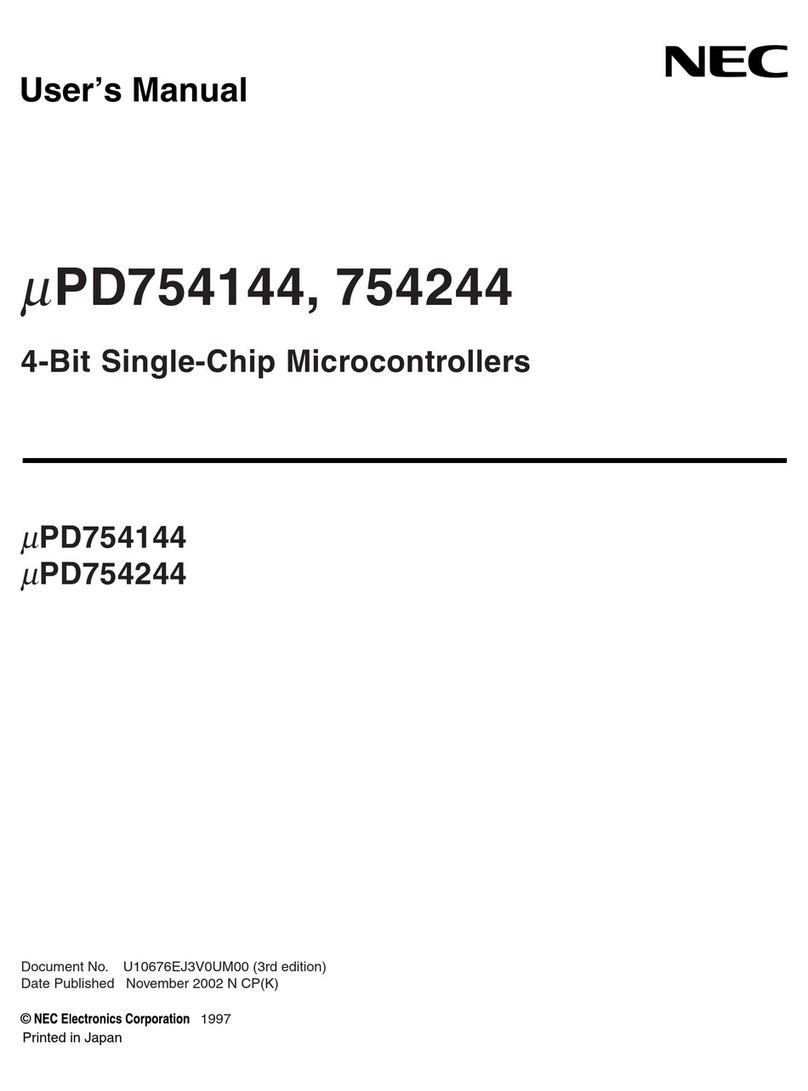
NEC
NEC PD754144 user manual
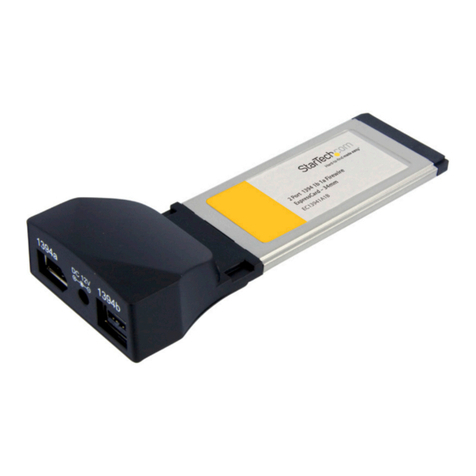
StarTech.com
StarTech.com EC13941A1B instruction manual
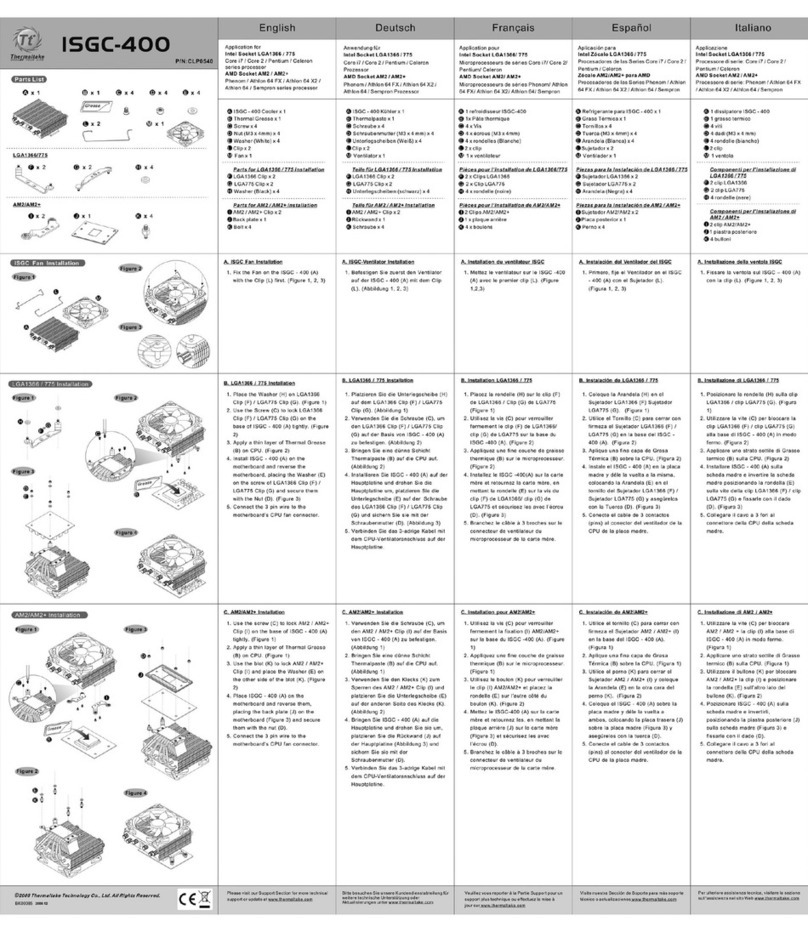
Thermaltake
Thermaltake CL-P0540 installation manual

ekwb
ekwb EK-FC460 GS/SONIC INSTALLATION AND MOUNTING MANUAL
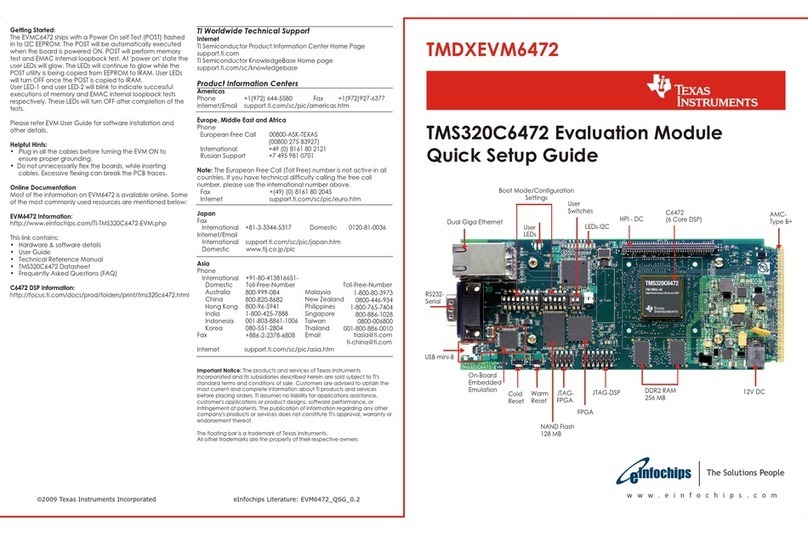
Texas Instruments
Texas Instruments TMDXEVM6472 Quick setup guide
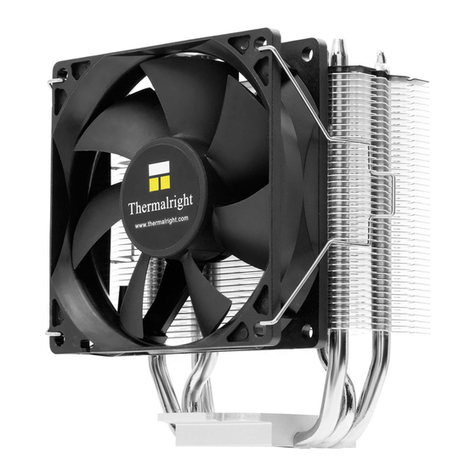
Thermalright
Thermalright TRUE Spirit 90 Direct manual

